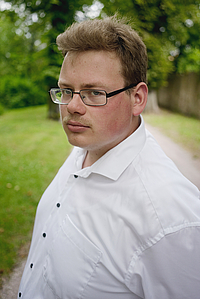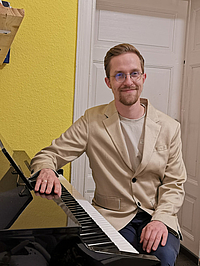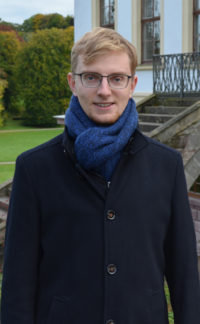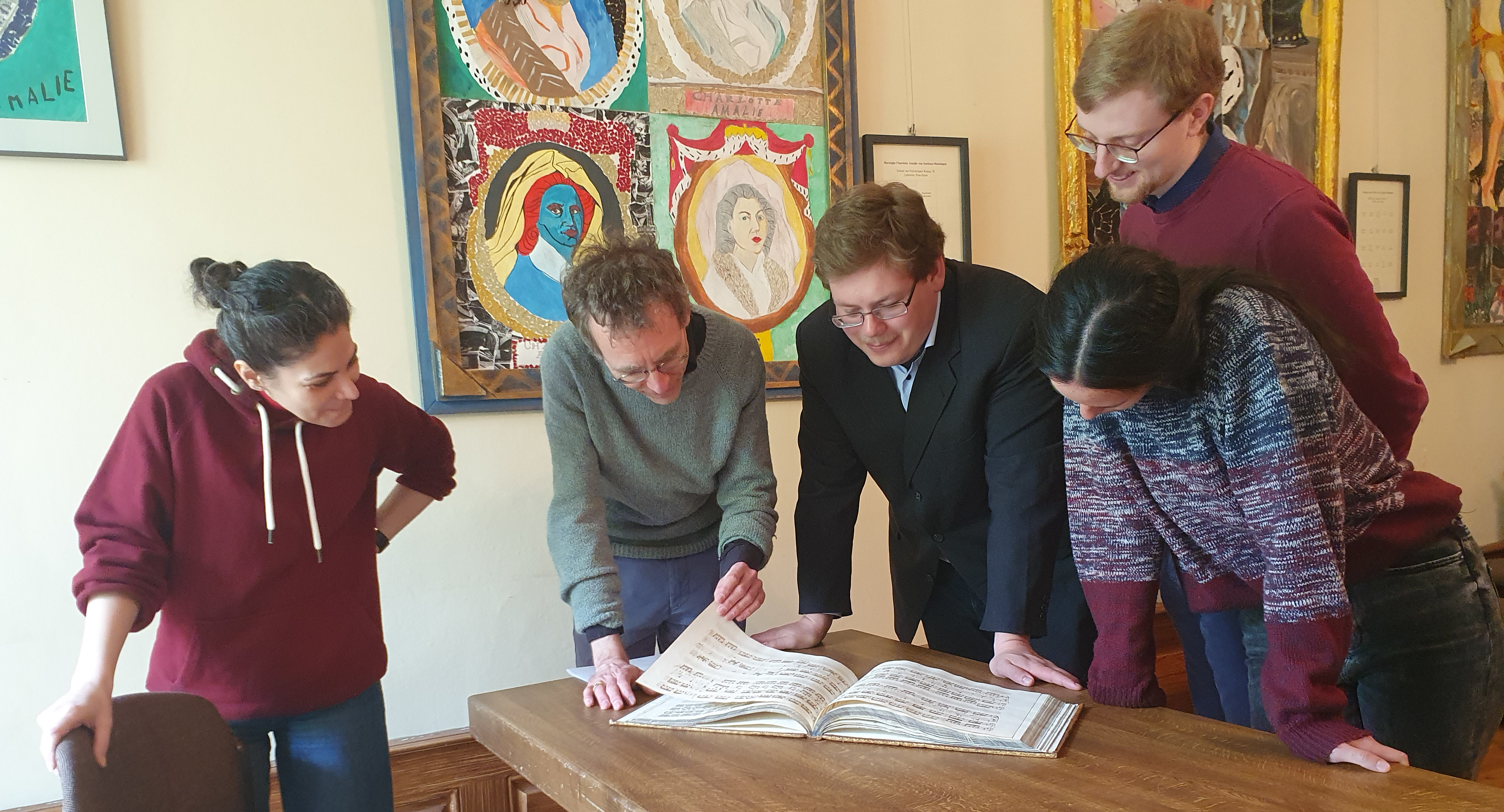Gallery of the graduates
In the following gallery you will find final works by students who have recently completed their studies at the Centre for Music Theory.
Georg-Friedrich Wesarg - Master concert on 6.6.2025

Baroque aria "Or che dorme l'idol mio"
Georg-Friedrich Wesarg about his composition:
This aria was composed in the summer of 2024 as part of the “Junges Podium” project and premiered on September 28 of the same year at the Early Music Festival “Güldener Herbst” in the Augustinerkirche in Gotha. It follows the form of a typical da capo aria: a calm, flowing, pastoral A section invites the listener to immerse themselves in a shepherd’s idyll, listening to the murmuring brook and the rustling leaves. In the contrasting B section, however, the stillness is disturbed by sinister machinations, and even the oboe falls silent. Yet fear not: in the end peace returns, and oboe and singer once again lull us into gentle repose with their suspensions, deceptive cadences, and falling fifth sequences.
Roman Engelhardt - Master concert on 7.2.2024

String quartet in F, 1st movement
Roman Engelhardt about his composition
This classical string quartet based on the model of Joseph Haydn follows the traditional form of a sonata form. The work is characterized by an initially homophonic movement in which the parts are strictly divided into melody and accompaniment: The secondary theme contrasts with the opening movement through its polyphonic structure and the contrapuntal accompaniment. The development makes use of various means typical of Haydn, such as playing with syntax and the expectations of his listeners.
Sonata No. 5, 1st movement
Roman Engelhardt about his composition
This sonata was composed in a free style. Although it uses the formal structure of a main sonata movement, it changes it in detail: for example, the recapitulation contains new formal sections that have not been introduced before. Harmonically and rhythmically, this piece is based on the Brazilian bossa nova style: Harmonic elements of jazz, as well as the use of typical claves, can be clearly heard.
Elias Wöllner - Master concert on 11.2.2023

Two songs for voice and piano in the Romantic style
Elias Wöllner about his compositions
Both songs are modelled on Robert Schumann without imitating him 1:1. The first song, Der wunde Ritter, a setting of a text by Heinrich Heine, is about the heartache of a knight whose lover has been unfaithful. Special musical devices are the sighing motif in the piano and the combative rhythm in the third verse, which then changes into the throbbing of the sore knight's heart. The following song Meeresstille has a different character. Unlike in Goethe's well-known poem, in Joseph von Eichendorff's work the calm of the sea is not something threatening, but an image that inspires dreaming. The broken chords that flow along in the piano are intended to help evoke this mood; at the same time, they imitate the sound of a harp, which is mentioned in the text.
Johanna Koerrenz - Master concert on 15.1.2023

Consolation Nr. 7
Johanna Koerrenz about her composition
One area of application of stylistic composition is the completion of fragments. The model for this piano piece in the style of Franz Liszt is an entry from his sketchbook, which comprises a total of just under 17 bars. The task now was to continue the theme and harmony in a meaningful way, to construct a coherent formal structure and to embed elements typical of Liszt in the piano writing and tonal language. Based on the character of the first eight bars, the sketch could well have been another Consolation, i.e. No. 7 after the six by Franz Liszt.
